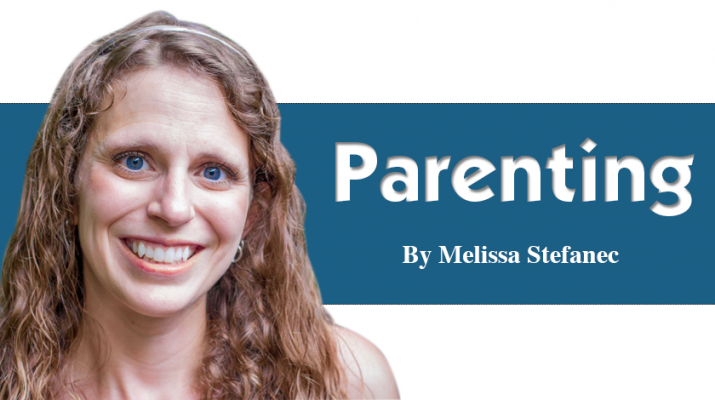By Melissa Stefanec
MelissaStefanec@yahoo.com
I thought about headlining this article with its topic. However, I realized I would lose some of my audience by the end of the headline.
That’s because this article is about common misconceptions surrounding child sexual abuse.
It’s a topic most people don’t want to think, speak or read about. It’s uncomfortable, disgusting, off-putting and depressing.
It’s also underreported and grotesquely common (as many as one in nine children will experience it).
As a society, we owe it to victims — past, present and future — to start learning and talking about it.
I hope I haven’t lost you yet, because a child you love may be a current victim. An adult you love may be a survivor. A family member, a coach or a preacher you respect may be a perpetrator.
Perhaps equally as disgusting is that for every perpetrator there are people who cover up that abuser’s actions. People turning a blind eye to abusers perpetuate abuse. The cycle breaks when we are willing to educate ourselves and take action.
In the past year, for professional and personal education reasons, I’ve learned a lot about sexual abuse of minors. I’ve discovered people have a lot of misconceptions. That needs to change.
Awareness is the first step in dismantling any societal ill. Awareness saves lives. That’s not a platitude; it’s a refrain we should repeat every time we confront something terrible and uncomfortable.
These misconceptions are just the tip of the proverbial iceberg. I’ve listed my sources at the end of this article. I hope you can find the strength to read on and keep learning, because until child sexual abuse stops, we haven’t done enough. [Trigger warning: some of the text below is graphic and may not be suitable for young readers or survivors.]
• Misconception No. 1: Child abuse looks like ______
Fact: A lot of people aren’t even sure what constitutes child sexual abuse. That’s because it’s a harrowing list of activities most of us have trouble processing.
Any of the following acts between a minor and perpetrator are considered sexual abuse: exhibitionism or exposing oneself to a minor; fondling a minor, intercourse with a minor, masturbating in the presence of a minor or forcing the minor to masturbate; obscene phone calls, text messages, or digital interaction; producing, owning, or sharing pornographic images or movies of children; sex of any kind with a minor, including vaginal, oral or anal; sex trafficking; or any other sexual conduct that is harmful to a child’s mental, emotional, or physical welfare.
• Misconception No. 2: Strangers are the biggest threat to children
Fact: The majority of children who are sexually abused are abused by a family member or an adult they are acquainted with. As many as 93% of victims under the age of 18 know their abuser. For every time we talk to our children about “stranger danger” we should talk to them about “sexual danger from people we know.”
• Misconception No. 3: If I don’t have clear evidence or abuse, I shouldn’t report my suspicion
Fact: Reports of suspected child abuse or maltreatment should be made immediately to the New York Statewide Central Register of Child Abuse and Maltreatment, commonly known as the Child Abuse Hotline, at 1-800-342-3720. This hotline operates 24 hours a day, seven days a week, 365 days a year. You can report anonymously. Any information is helpful. If you believe a child is in immediate danger, call 911.
• Misconception No. 4: Child sex abuse only occurs between adults and children
Fact: Children can sexually abuse other children. Siblings and playmates can be perpetrators. Sometimes, child perpetrators are victims of sexual abuse themselves.
• Misconception No. 5: Boys (and men) aren’t sexually abused
Fact: Men and boys can be victims sexual abuse, regardless of their societal status, religion or sexuality. As many as one in six men will be sexually abused in their lifetimes. There is often an increased stigma for male victims, a stigma that keeps many of them from reporting their abuse.
• Misconception No. 6: Women don’t sexually abuse children
Fact: Women are perpetrators of sexual abuse. They may be the abuser or facilitate abuse. The statistics vary, but reports list females as the perpetrator in 5% to 20% of child sex abuse cases.
• Misconception No. 7: There will always be physical signs of child sex abuse
Fact: There are physical signs of child sexual abuse, but there are also many behavioral changes. These changes include: changing hygiene standards; developing phobias; exhibiting signs of depression or PTSD; having trouble in school; experiencing nightmares or bed-wetting; possessing inappropriate sexual knowledge; being overly protective and concerned for siblings; exhibiting regressive behaviors; running away; inflicting self-harm; and avoiding physical contact.
• Misconception No. 8: Abusers are mean to the minors they abuse
Fact: If you don’t know what grooming is, please educate yourself via the links below. Many sexual abusers go to great lengths to earn their victims’ and adults’ trust, whether that victim is 4 or 14. They do nice things for their victims. They may seem to love their victims. Not all child sexual abuse includes violence or physical coercion.
If these misconceptions drive you to take action for yourself or someone in your life, here are some places to start.
If you are a victim of sexual abuse, you can talk to someone anonymously. You can seek out legal help from a credible Child Sexual Assault Lawyer.
Call the National Child Abuse Hotline at 800-4-A-CHILD (422-4453), any time 24/7. To speak with someone who is trained to help, call the National Sexual Assault Hotline at 800.656.HOPE (4673) or chat online at online.rainn.org.
Here are some helpful links to more information about child abuse:
• www.rainn.org/articles/child-sexual-abuse
• www.bmj.com/content/bmj/300/6733/1153.full.pdf
• https://pubmed.ncbi.nlm.nih.gov/25635900/

